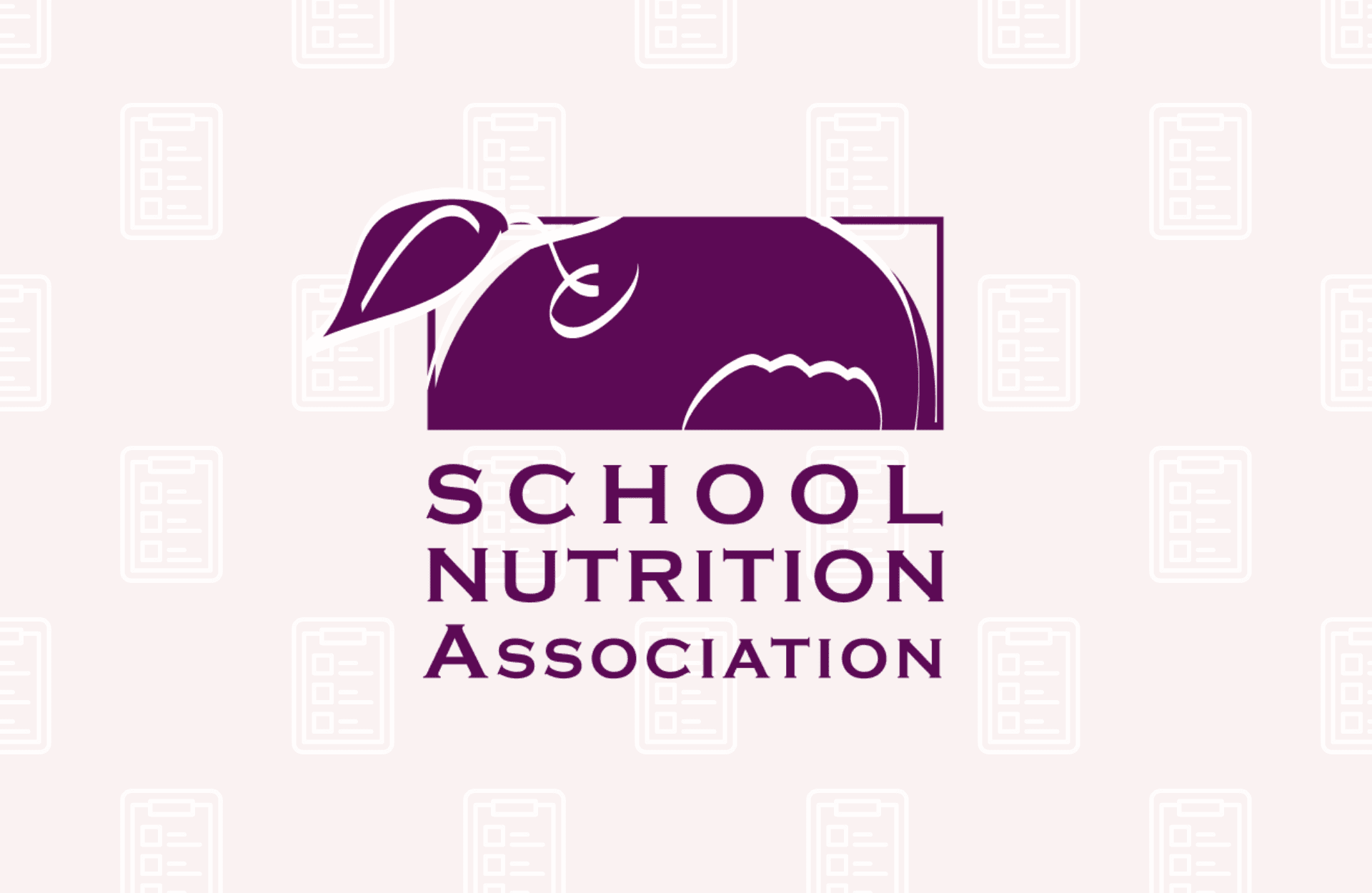FOR IMMEDIATE RELEASE:
Contact: Diane Pratt-Heavner
703-576-7526
media@schoolnutrition.org
SNA Survey: Extensive Challenges Persist into SY 2021/22
2021-07-08
Financial, regulatory concerns cited as threats to school meal programs
ARLINGTON, VA – A new survey of 1,368 school meal program directors nationwide reveals serious financial and operational challenges for the upcoming school year and grave concerns regarding the impact of future sodium regulations. The School Nutrition Association’s (SNA) Back to School 2021 Survey spotlights key issues Congress must address in Child Nutrition Reauthorization legislation to ensure the sustainability of school meal programs, which reach more than 50 million students across the country.
“School meal programs, which are critical to the health and success of millions of America’s students, face an uncertain future following the pandemic. Congress must act to ensure these programs are financially sustainable to benefit future generations,” said SNA President Reggie Ross, SNS. “With research showing children receive their healthiest meals at school, Congress and USDA must focus on supporting meal participation rather than mandating severe sodium reductions that will result in fewer students eating healthy meals and further financial losses for school meal programs.”
Survey Findings:
USDA recently extended key COVID-19 waivers through School Year (SY) 2021/22, including the option for schools to offer free meals to all students. Survey respondents noted significant benefits associated with free meal service, with large majorities reporting: increases in student access to meals, meal participation rates and equity among students; along with decreases in unpaid meal debt for families and stigma for low-income students. SNA is urging Congress to permanently offer free school meals for all students to support learning.
Despite waiver extensions, the survey shows school nutrition directors still face significant concerns for the upcoming school year:
- 97% are concerned about continued pandemic supply chain disruptions, with 65% citing this as a serious concern
- 90% worry about staff shortages
- 82% are concerned about low meal participation
- Large majorities also reported concerns about pandemic meal service modifications, barriers to serving distance learners and meeting school nutrition standards
Financial Concerns:
The financial sustainability of school meal programs also ranked as a concern for 86% of responding school nutrition directors. School meal programs have always operated on extremely tight budgets, but pandemic-related losses and rising costs have tipped the balance.
USDA data shows that in the first full year of the pandemic (Mar. 2020 – Feb. 2021), schools served 2.2 billion fewer meals compared to the prior year, equating to a $2.3 billion loss in federal revenue. SNA’s Back to School 2021 Survey highlights the impact of this revenue gap:
- Nearly half (48%) of school meal programs anticipate a net loss for SY 2020/21, with an additional 20% unsure of what to expect
- Of those expecting a loss, only 32% anticipate having sufficient reserves to cover that loss
School nutrition directors have taken wide-ranging steps to address financial concerns during the pandemic:
- 71% of respondents limited menu choices and variety
- 46% reduced staffing and 13% reduced staff benefits or salaries
- 42% deferred equipment investments, while 40% delayed program expansions/improvements
School meal program losses impact education budgets. Nearly 30% of responding school meal programs have requested district general funds to cover losses. SNA is urging Congress to provide additional relief funds to keep school meal programs financially sustainable.
Regulatory Challenges:
An overwhelming majority of school nutrition directors also expressed concerns about future sodium regulations. Schools significantly reduced the sodium in school meals to meet Target 1 limits and are working toward Target 2 limits. However:
- Only 26% of school nutrition directors report their programs are prepared to meet Target 2 limits
- Only 11% anticipate being able to meet the Final Target, scheduled to take effect in July 2022
- 74% are extremely concerned about the impact of Final Target limits on their programs, with a total of 97% expressing concern
Among the challenges to meeting the Final Target, more than 95% of respondents cited student acceptance of reduced sodium foods, negative impact on meal participation, sodium levels in condiments, product or ingredient availability, higher costs and naturally occurring sodium in foods such as milk, low-fat cheese and meat. Nearly 70% or more cited these as significant challenges. Limitations on scratch cooking, such as staff, infrastructure or schedule constraints, was also cited by nearly 90% of school nutrition directors as a challenge.
The current mandate that all grains offered with school meals must be whole grain rich is also a challenge for nearly 70% of school meal programs. Student acceptance of whole grain foods and the negative impact on student participation were the top challenges cited by virtually all responding school nutrition directors (98%), closely followed by the higher cost of whole grains, recipe functionality and product or ingredient availability.
USDA waivers allow states to provide targeted flexibility for school meal programs struggling to meet sodium and other meal pattern mandates through SY 2021/22; however, SNA is urging Congress and USDA to delay Target 2 mandates until July 2024, eliminate Final Target sodium limits and restore the mandate that half of all grains offered with school meals be whole grain rich.
“School nutrition professionals are constantly working to improve our programs and ensure we nourish our students for learning,” said Ross. “Let’s work together to preserve the tremendous progress achieved in school cafeterias and empower and encourage school nutrition professionals to exceed current nutrition standards whenever possible.”
SNA is working to help school nutrition professionals address challenges and improve their programs through year-round educational programming. SNA’s upcoming virtual Annual National Conference features sessions for recovering from financial loss, staff recruiting and retention practices, addressing supply chain challenges and menu planning tactics to boost meal participation and meet meal pattern requirements.
About School Nutrition Association:
The School Nutrition Association (SNA) is a national, non-profit professional organization representing 50,000 school nutrition professionals across the country. Founded in 1946, SNA and its members are dedicated to making healthy school meals and nutrition education available to all students. For more information on school meals, visit www.SchoolNutrition.org/SchoolMeals
Related Articles

SNA Urges MAHA Commission to Invest in School Meals
Read More

School Nutrition Professionals to Implore Congress to Protect School Meals
Read More




